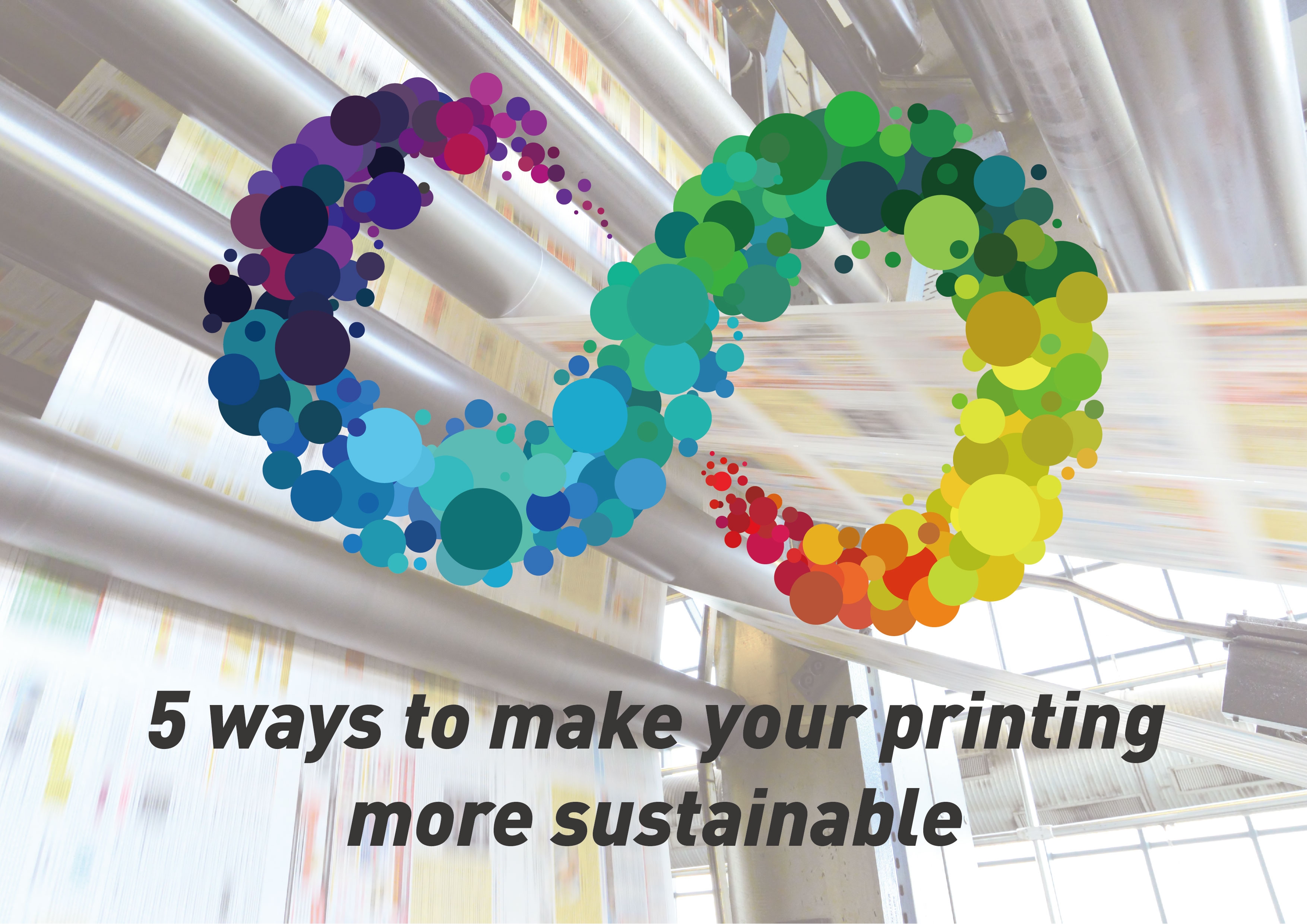5 ways to make your printing more sustainable

There are many ways to make your printing more sustainable. Understanding what sustainable printing methods are available on the market can help you build up your business’s eco-friendly credentials. As environmentally friendly options are becoming more popular on the market, building up your eco-friendly credentials brings you closer to consumers.
· A more sustainable flexo printing
· UV LED / NIR drying
· Using recycled substrates
· Using uncoated paper
· Water based printing
1. A more sustainable flexo printing
If you are currently on a gravure printing operation, switching to a flexo printing operation can help you to decrease your VOC emission. The solvent level in the flexo solvent-based ink tends to be much lower when compared to the gravure solvent-based ink. As a result less VOC emission from the flexo printing operation.
2. UV/LED
Adopting a UV/LED drying method is more sustainable as they use much less power when compared to traditional drying technologies. The UV/LED has the capability to instantly turn on and off which reduces the energy consumption during warming up from a job initiation or during standby between print jobs that further reduces the overall CO2 emission. Many people shy away from the UV/LED due to its high equipment cost. However, in the long term, if we account for the energy cost incurred, UV/LED may have a lower overall cost than traditional drying technologies.
3. Using recycled substrates
Printing can be more sustainable starting from the substrate that it prints on. A recycled substrate can be recycled paper or recycled film. An alternative to recycled paper is the carbon balance paper. Carbon balance paper means the average CO2 created during the entire paper production has been offset to net zero. Therefore, by using carbon balance paper, your business automatically participates in a sustainable print solution.
4. Using uncoated paper
Using paper instead of plastics may seem more sustainable from a decomposition standpoint. However, coated paper is another story. Most coated paper behaves just like plastic. Recycling coated paper requires a special process to separate the coating from the paper. Due to the cost involved in the separation of coating and paper, most coated paper is never recycled. Therefore, coated paper is not as ecofriendly as you think. To have a sustainable printing operation, one way is choosing to print on uncoated paper. However, one of the main issues with uncoated paper is its performance. Uncoated paper lacks the ability to stand up to water, grease, and moisture. This does not mean uncoated paper is unfit for the market, we just need to be more selective in its application.
5. Water-based printing
When compared to solvent-based ink, water-based ink is more environmentally friendly as it produces less VOC. In general, the ink composition of solvent-based ink is around 35% pigments and resin, 65% solvent. The ink composition of water-based ink is around 40% pigments and resin, 55% water and 5% solvent. As a result, water-based ink has much less solvent to begin with and therefore emits much less VOCs into the atmosphere, making it a more sustainable printing choice.
Advancement in technology allows printers to produce sustainable printed material with less effect on printing quality. The technology can be related to printing methods, ink, substrate, and drying method. Look for opportunities when it comes to building up your eco-friendly credentials, this way you can stay ahead of the competition and strive through the market.


























